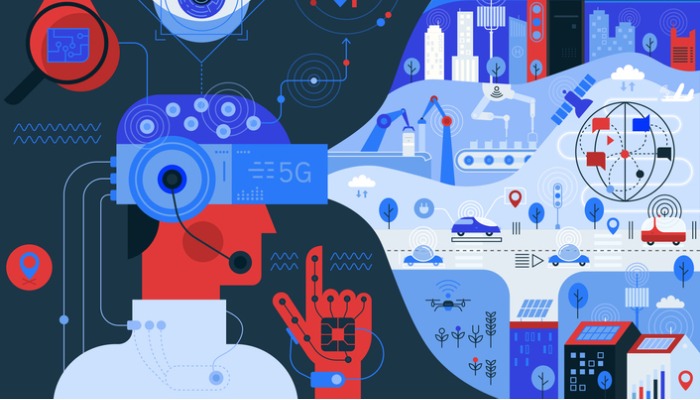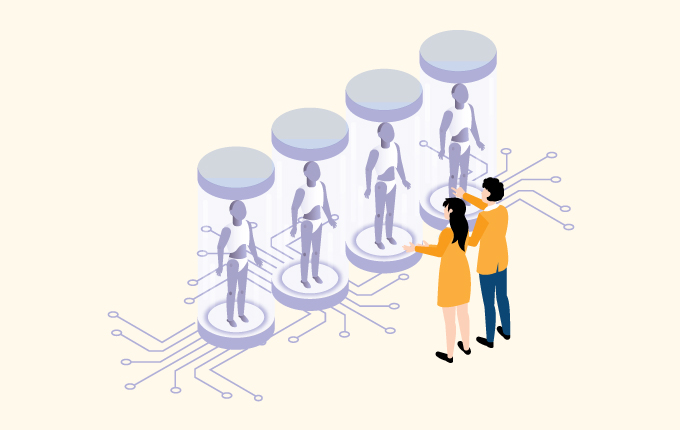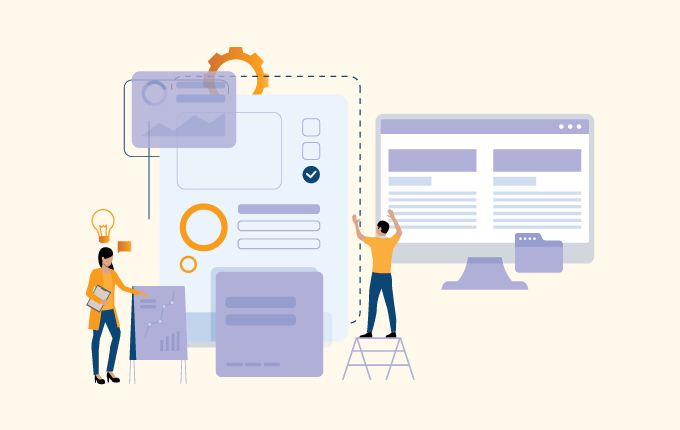Business IntelligenceCloud ServicesIT Consulting & StrategySecuritySoftware DevelopmentTech Support & Managed IT ServicesTelecommunicationsConstructionEducationFinanceHealthcareLegalReal Estate
Regardless of what we thought would be the defining tech of 2020, the year had other plans. The dominant tech in 2020 wound up being almost exclusively related to the COVID-19 pandemic. We saw certain types of tech increase in importance, including:
- Video conferencing apps like Zoom.
- Collaborative cloud platforms like Microsoft 365.
- Communication tools like Slack.
- Virtual private networks (VPNs).
These types of tech rose to prominence because they helped us successfully navigate the sudden changes in the world brought on by the pandemic.
In 2021, we’ll still see technology that helps us deal with the challenges of the pandemic, but we’re also going to see tech that’s been up and coming for the past few years finally hit its stride.
Let’s take a look at the tech we’re going to see more of this year.

6 Tech trends to watch in 2021
2021 is going to be a year where technologies that we’ve been talking about for a few years start moving into the mainstream. Some of them are a little… controversial (except not really) and some of them have the potential to revolutionize how we use computers.
1. IoT and 5G technology
The internet of things (IoT) has been around for a while, but it’s only been in the last few years that we’ve started seeing widespread use of the technology in business. So far, we’ve seen beyond convenient consumer tech like autonomous cars and wireless light bulbs, but that’s not all it’s capable of. The IoT has the potential to transform everything from how we manufacture goods to the cost of repairing wind turbines.
5G technology, despite its somewhat shady reputation, will only enhance the viability of how we use IoT devices. 5G brings with it a host of features that make it ideal for IoT. The ability to deploy personal closed 5G networks make it possible to run IoT-enhanced projects in remote areas (think farming in very rural areas). It’s also battery-friendly, meaning the IoT sensors will be able to go as long as 10 years before needing a battery change.
2. Cybersecurity
With every big shift in technology comes an increased need for better cybersecurity. It never fails. Even at the start of the pandemic last year, there was an immediate boom in cybercrime, partially driven by the move to remote work, and the new technology people were using as a result.
2021 is going to be no different. The challenges cybersecurity professionals are going to face this year include:
- A need to better secure remote employees and the technology they use. This includes a push for more VPNs and better security around connecting to remote services. And, there’s also going to be a need for increased adoption of mobile device management as more employees work remotely using their own devices.
- As well, the continued rise of IoT devices means enhanced security measures, especially around entry-level consumer devices, which have been plagued by issues since day one. With technology like self-driving cars becoming more common and more IoT devices making their way into the workplace, preventing these devices from becoming attack vectors for ransomware and botnet attacks is going to be critical.
- The move to work from home means a lot more business will be done on the cloud through platforms like Microsoft 365, Google Suites, and Asana. And that means your cloud is going to need some protection. We’ve already seen one high-profile attack on Microsoft and, while the main targets of the attack were governments, businesses and personal users are also at risk.
- The rise in data protection laws like the General Data Protection Regulation (GDPR) and the California Consumer Privacy Act (CCPA) requires companies to be hypervigilant about the data they acquire and how they store it. These regulations come with hefty fines that make it prohibitive to be lax about data protection.
3. The “work from home” boom and the rise of the digital workplace
2020 may have been a sudden introduction to working from home for a lot of companies, but 2021 will be the year when we fully embrace it. Prior to the pandemic, the big hesitation around remote working was that employees wouldn’t work. They’d lounge around all day doing nothing but still collect a paycheck. We learned this was nonsense. Employees weren’t less productive, they were more.
This means there’s room for collaborative platforms, like Eloops and Bluescape, that can make working remotely even more effective. There is also, as we mentioned, an increased need to develop better security solutions around work from home tech.
Along with these collaborative platforms comes data that can help companies figure out things like which teams work more efficiently together and where they can improve. This data can help businesses boost productivity and create highly efficient teams that work extremely well together.
4. eLearning
This wasn’t everybody’s favorite thing about 2020, but remote learning was just as big a part of the last year as remote working. In 2021, we’re going to see this technology evolve in a way that improves the experience for everyone.
Platforms like Udacity and Coursera are already well-established, but 2021 will see businesses emerge with platforms that make it easier for elementary and high school levels to run their classrooms online.
We’re also going to start seeing a push for training and learning tools that are mobile-first, rather than mobile-ready. This helps eliminate the awkward user interface (UI) and user experience (UX) that comes with platforms that were quickly ported to mobile devices when the pandemic hit. Newer platforms/designs allow people to train and learn more efficiently on the go and use their mobile devices at home instead of having to have a dedicated workstation.

5. Machine learning and artificial intelligence
Machine learning (ML) and artificial intelligence (AI) are increasingly being used everywhere in the world. From guiding self-driving vehicles to helping us make better chips, the possibilities for these technologies are seemingly endless.
Businesses are using ML and AI to help with:
- Reducing churn by analyzing the behaviors of customers who previously canceled services and proactively reaching out to make offers that might convince them to stay or sign back up.
- Building recommendation engines (similar to what Amazon uses) to help make custom offers to customers based on their previous purchases or search items. This can be paired with sales and other events, like geo-targeting, to entice customers to make purchases at times they might otherwise not.
- Helping improve human-to-human conversations by integrating AI into communications platforms to capture important information, schedule follow-ups, and provide accurate real-time transcriptions.
6. Edge and quantum computing
Quantum and edge computing are at the forefront of the push for faster processing times. Quantum computing relies on quantum phenomena such as entanglement, while edge computing brings the computation as close as possible to where it’s needed.
Edge computing is poised to take on big data centers that are often too far from where the computations are needed, say on a factory floor close to the IoT sensors that are producing the data, for example. This means there will be a rise in smaller, more localized options (such as data marketplaces like Edgevana) for storing and processing data.
Quantum computing is bringing speed to industries like healthcare, for example, where faster diagnoses can sometimes make all the difference to a sick loved one.
7. Honorable mentions – blockchain and cryptocurrency
Bitcoin is experiencing a bit of a renaissance. And, while people are excited about what this means for cryptocurrency and blockchain as a whole, it’s not quite ready for prime time just yet. Blockchain has been misunderstood and distrusted since it emerged as a technology.
That said, blockchain is in a position to have a huge impact on industries like finance (since blockchains are not alterable) and counterfeit detection as more and more companies start investigating uses for this still up-and-coming technology.
Ready to invest in the future?
Are you curious about some of the technology we think is going to make waves in 2021? If you are and you’re wondering how they can help your business not only grow, but thrive, we should talk.
Our experts are as excited about the potential of the technology that’s coming into its own in 2021 as you are – maybe more! – and we’d love to sit down and help you figure out how it can help your business. Contact us today to find out more.
[sales-phone] | [email-address]



 February 2, 2021
February 2, 2021 Homefield IT
Homefield IT

